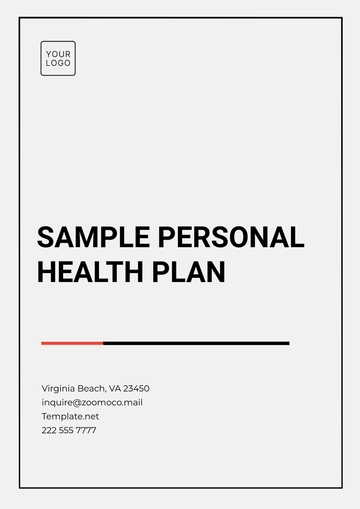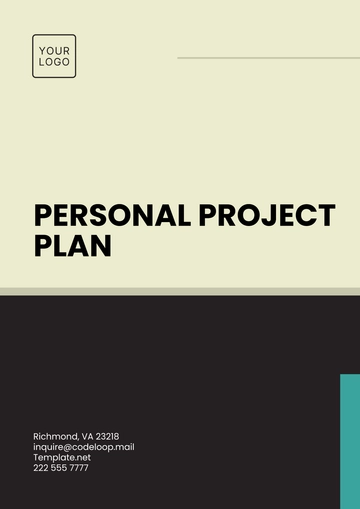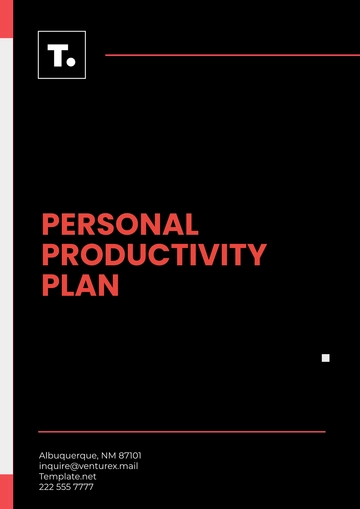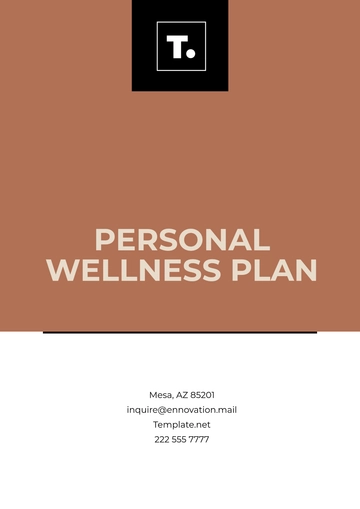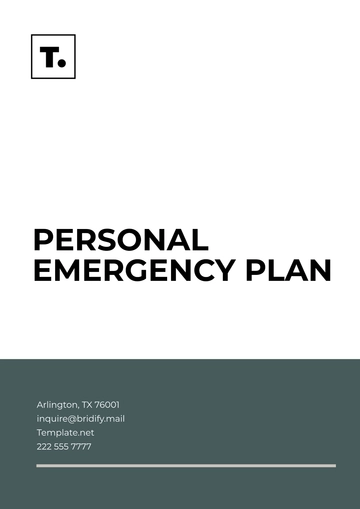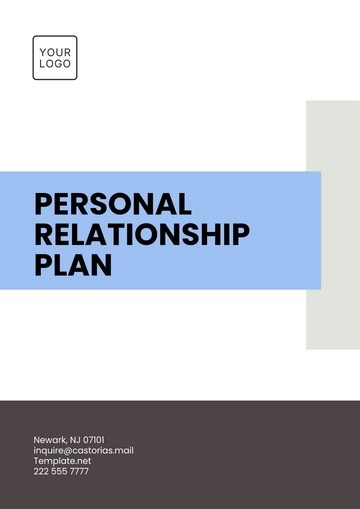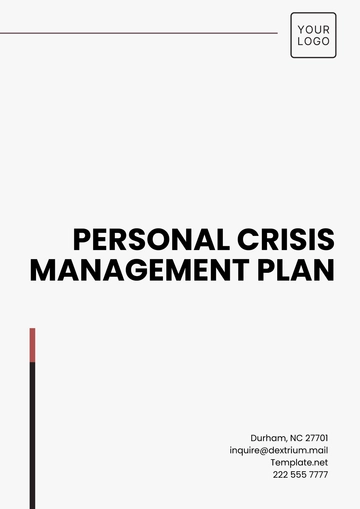Free Personal Retirement Plan
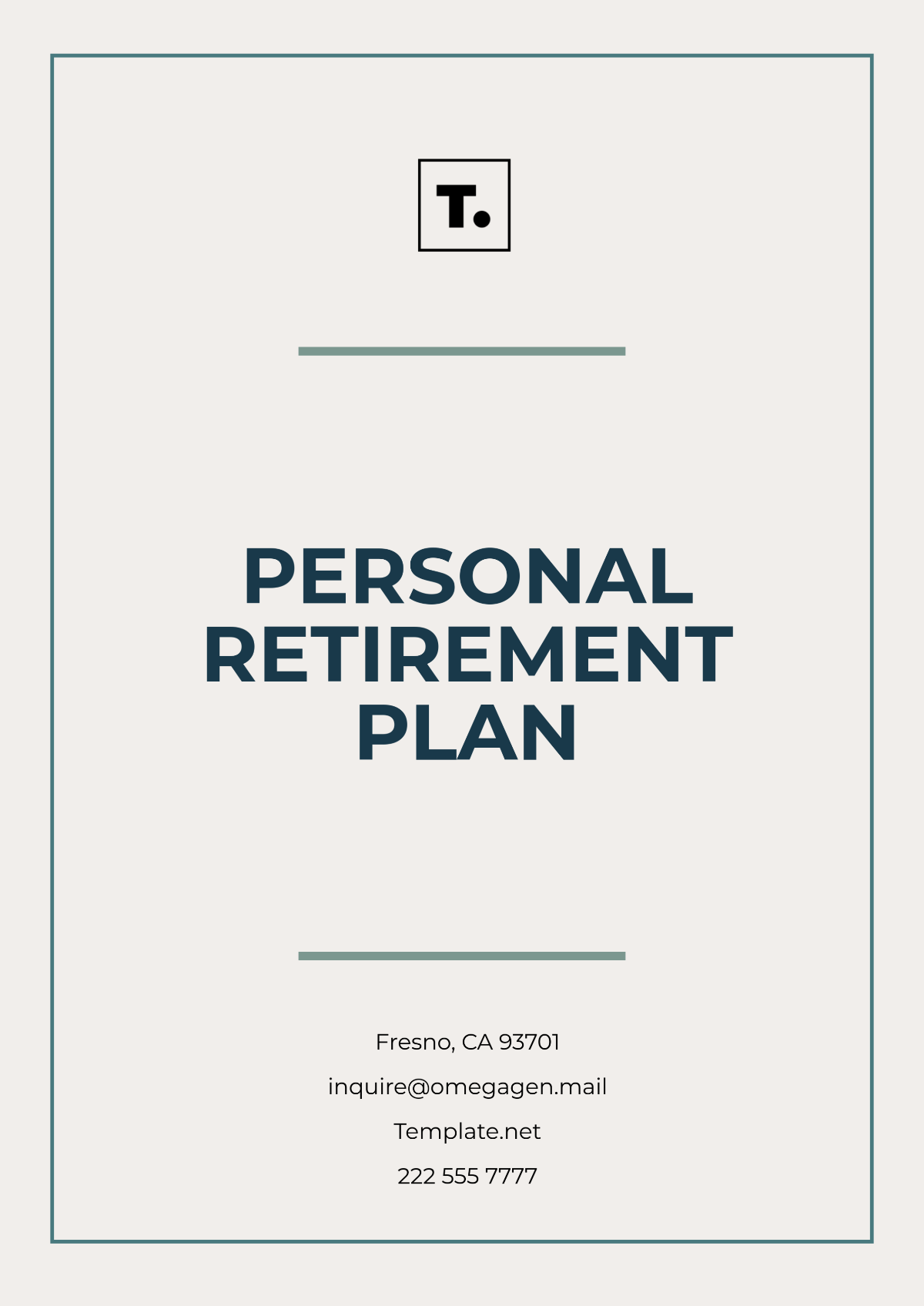
Prepared by: [Your Name]
I. Retirement Goals
Desired Retirement Age: 65 years old
Lifestyle Goals: Maintain current standard of living, with additional travel and leisure activities
Financial Objectives: Ensure enough funds to cover living expenses, healthcare, and any unforeseen costs, while also having a comfortable buffer for emergencies or lifestyle upgrades.
II. Current Financial Situation
Income: $80,000 annually
Savings: $25,000 in a savings account, $40,000 in a 401(k) plan
Investments: $10,000 in stocks, $15,000 in bonds
Debts: Mortgage balance of $150,000, student loan balance of $10,000
Expenses: Monthly living expenses of $3,000 (housing, utilities, food, transportation, etc.)
III. Retirement Savings Strategy
Annual Savings Goal: Save 15% of annual income ($12,000 per year)
Retirement Accounts: Contribute to a 401(k) up to employer match, then maximize contributions to a Roth IRA
Investment Strategy:
Equity Investments: 60% stocks (diversified across growth and dividend-paying companies)
Fixed Income Investments: 30% bonds (to balance risk)
Cash and Other Assets: 10% in liquid assets (cash or low-risk investments)
Tax Considerations: Utilize tax-advantaged retirement accounts (401(k) and Roth IRA) to reduce taxable income now and in retirement.
IV.Income Projections
Retirement Income Needs: Estimate monthly expenses of $4,000 in retirement (adjusted for inflation)
Sources of Retirement Income:
Social Security: Estimated monthly benefit of $2,000 at age 67
401(k) and IRA Withdrawals: Drawdown from retirement accounts to supplement income
Part-time Work: Possible supplemental income from part-time work or freelance opportunities, estimated at $500 per month
V. Risk Management
Inflation Protection: Invest in assets that typically outpace inflation, such as equities and TIPS (Treasury Inflation-Protected Securities)
Healthcare Coverage: Save additional funds for out-of-pocket healthcare costs in retirement; consider a health savings account (HSA) for tax-free medical expenses
Long-Term Care: Plan for potential long-term care needs by allocating funds for this purpose or exploring long-term care insurance options
Emergency Fund: Maintain a separate emergency fund with at least 6 months’ worth of living expenses ($18,000)
VI. Timeline
Years 1-5 (Current Stage): Focus on paying off debts (student loan and mortgage) and building an emergency fund
Years 6-10 (Mid-Term Stage): Increase savings rate to 20% of income per year and begin aggressive retirement account contributions
Years 11-20 (Pre-Retirement Stage): Adjust portfolio to reduce risk as retirement approaches, ensure retirement savings grow according to plan
Age 65 (Retirement Age): Retire with a projected savings goal of $1.5 million, ensuring stable income through investments and Social Security
- 100% Customizable, free editor
- Access 1 Million+ Templates, photo’s & graphics
- Download or share as a template
- Click and replace photos, graphics, text, backgrounds
- Resize, crop, AI write & more
- Access advanced editor
Plan for a secure future with the Personal Retirement Plan Template from Template.net. This customizable template helps you outline your retirement goals, savings strategies, and investment plans. The editable format allows you to update your plan as needed, while the Ai Editor Tool makes it easy to adjust your plan to changing financial circumstances.
You may also like
- Finance Plan
- Construction Plan
- Sales Plan
- Development Plan
- Career Plan
- Budget Plan
- HR Plan
- Education Plan
- Transition Plan
- Work Plan
- Training Plan
- Communication Plan
- Operation Plan
- Health And Safety Plan
- Strategy Plan
- Professional Development Plan
- Advertising Plan
- Risk Management Plan
- Restaurant Plan
- School Plan
- Nursing Home Patient Care Plan
- Nursing Care Plan
- Plan Event
- Startup Plan
- Social Media Plan
- Staffing Plan
- Annual Plan
- Content Plan
- Payment Plan
- Implementation Plan
- Hotel Plan
- Workout Plan
- Accounting Plan
- Campaign Plan
- Essay Plan
- 30 60 90 Day Plan
- Research Plan
- Recruitment Plan
- 90 Day Plan
- Quarterly Plan
- Emergency Plan
- 5 Year Plan
- Gym Plan
- Personal Plan
- IT and Software Plan
- Treatment Plan
- Real Estate Plan
- Law Firm Plan
- Healthcare Plan
- Improvement Plan
- Media Plan
- 5 Year Business Plan
- Learning Plan
- Marketing Campaign Plan
- Travel Agency Plan
- Cleaning Services Plan
- Interior Design Plan
- Performance Plan
- PR Plan
- Birth Plan
- Life Plan
- SEO Plan
- Disaster Recovery Plan
- Continuity Plan
- Launch Plan
- Legal Plan
- Behavior Plan
- Performance Improvement Plan
- Salon Plan
- Security Plan
- Security Management Plan
- Employee Development Plan
- Quality Plan
- Service Improvement Plan
- Growth Plan
- Incident Response Plan
- Basketball Plan
- Emergency Action Plan
- Product Launch Plan
- Spa Plan
- Employee Training Plan
- Data Analysis Plan
- Employee Action Plan
- Territory Plan
- Audit Plan
- Classroom Plan
- Activity Plan
- Parenting Plan
- Care Plan
- Project Execution Plan
- Exercise Plan
- Internship Plan
- Software Development Plan
- Continuous Improvement Plan
- Leave Plan
- 90 Day Sales Plan
- Advertising Agency Plan
- Employee Transition Plan
- Smart Action Plan
- Workplace Safety Plan
- Behavior Change Plan
- Contingency Plan
- Continuity of Operations Plan
- Health Plan
- Quality Control Plan
- Self Plan
- Sports Development Plan
- Change Management Plan
- Ecommerce Plan
- Personal Financial Plan
- Process Improvement Plan
- 30-60-90 Day Sales Plan
- Crisis Management Plan
- Engagement Plan
- Execution Plan
- Pandemic Plan
- Quality Assurance Plan
- Service Continuity Plan
- Agile Project Plan
- Fundraising Plan
- Job Transition Plan
- Asset Maintenance Plan
- Maintenance Plan
- Software Test Plan
- Staff Training and Development Plan
- 3 Year Plan
- Brand Activation Plan
- Release Plan
- Resource Plan
- Risk Mitigation Plan
- Teacher Plan
- 30 60 90 Day Plan for New Manager
- Food Safety Plan
- Food Truck Plan
- Hiring Plan
- Quality Management Plan
- Wellness Plan
- Behavior Intervention Plan
- Bonus Plan
- Investment Plan
- Maternity Leave Plan
- Pandemic Response Plan
- Succession Planning
- Coaching Plan
- Configuration Management Plan
- Remote Work Plan
- Self Care Plan
- Teaching Plan
- 100-Day Plan
- HACCP Plan
- Student Plan
- Sustainability Plan
- 30 60 90 Day Plan for Interview
- Access Plan
- Site Specific Safety Plan




